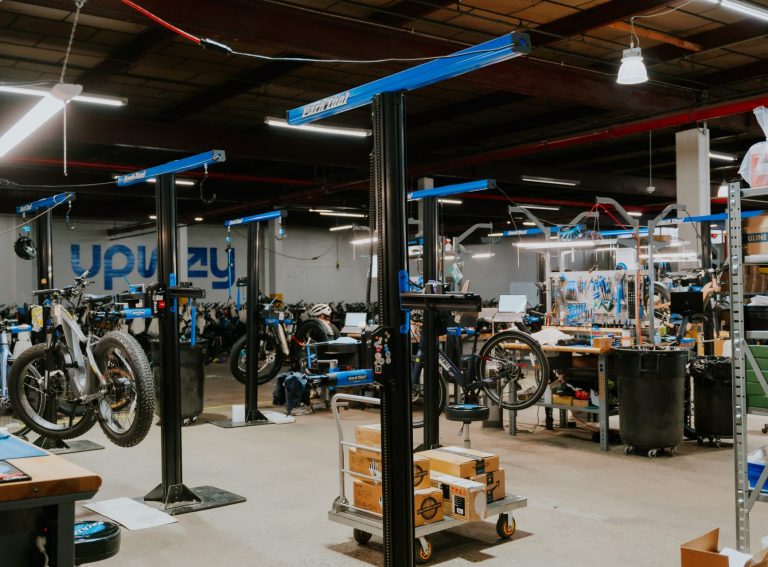In Bermondsey, southeast London, ZevHub has converted an old printworks into a multi-customer microhub to take sustainable urban logistics to the next level.
With more than one megawatt of electricity being pumped into the building, it comes complete with fast chargers, washrooms, a drivers lounge, hot food counters, meeting rooms, parcel lockers, parking slots and even a multi-faith prayer room.
Zag sat down with ZevHub’s Fleet Operations Director George Cook and partner Kevin Savage, COO of sustainable last mile delivery firm Delivery Mates, to see how the hub works in practice.
Zag Daily: Can you explain how the site operates George?
George: “Sure, what we’ve done is taken the lease on this site and then divided it up into separate areas, with sub-tenants all connected to this area of micromobility. So we’ve got four different tenants on site at the minute. Powering their fleets are 10 x 30 kilowatt vehicle charges. We also run a battery swap operation that has over 120 battery swap charging mechanisms. The power supply into this building is over one megawatt and we’re investing now in additional charges. By September this year, we’ll have 10 rapid charges and an additional battery storage unit which will take us up to 1.5 megawatt to really supply what’s needed in terms of vehicle charging and micromobility.”
Zag: Why did Delivery Mates decide to partner with ZevHub?
Kevin: “ZevHub has created a truly unique micromobility consolidation center which can serve much of London. I don’t know of any other site that offers this level of charging and space for sustainable last mile companies and I’ve been looking for three years.”
Zag: What was Delivery Mates looking for specifically?
Kevin: “We needed a site with lots of power coming into the building to charge our fleet of e-cargo bikes and e-vans, with plenty of room to grow as we take on new customers.
“If we are to really move the needle on last mile delivery, the UK will need a network of multi-customer microhubs like this one where we can bring stock in, load it on to our e-cargo bikes and distribute it across the capital. We came across ZevHub back in November last year, loved what we saw and moved customers in from February, signing a 12 month deal.”
Zag: How many e-cargo bikes does Delivery Mates have stationed there?
Kevin: “We currently have 30 with capacity to expand to 50. Once we’ve fully charged our cargo bikes they can then work a full day, and if need be, we can do battery swaps for micromobility operators too, so we only need to operate from this site. What I mean by that is that we don’t need more charging points to access during the day so the level of customer volume is quite significant. We can cover anywhere from four to five miles from this centre.”
Zag: What is the maximum capacity of the building?
George: “The size of the warehouse is 65,000 square feet so it’s a big space. To give you an idea of capacity, Kevin and Delivery Mates take up about 10% of it so we can create many more charging points. What we’re trying to do is build a real community hub spirit where people can fully reap the benefits of this environment. That’s why we have a shared canteen, rest areas, toilets, showers and more. But it is also crucial that the building is really secure. For this, it needed to be well lit and have 24/7 surveillance because if you look at, say, Kevin’s operation, he’s got all his customers’ parcels flowing through the site each day.”
Zag: Is this how you see the last mile industry evolving, Kevin?
Kevin: “The sustainable logistics industry needs to have big multi-customer operating centers in urban areas. That is a must. We want to see more in our cities and by partnering with a company like ZevHub, which has the appetite to expand, means we can operate micromobility, cross stock operations, sortation and storage 24/7. This makes our operation much more efficient and we can drive the price down because there’s less downtime.”
Zag: Why aren’t there more of these micromobility consolidation centres in London already?
George: “It is not easy to get this level of electrical supply into buildings. This is quite a unique space and to find others that can operate this sort of turnkey operation is quite rare. There is very little industrial type property with enough power supply within our urban areas, we’ve taken it away by creating retail space and living space for people. But we do need to convert these brownfield sites into new microhubs if we’re to scale to the levels we need to get these vans off the road, reduce congestion and clean up our air. We’re hoping to launch another one ourselves in the next six to 12 months but there’s some critical criteria we need to make any site a success. What we aim to achieve with this first site is a blueprint where micromobility players can join the consolidation centre and we can create an environment where the clean last mile sector can thrive as a community.”





